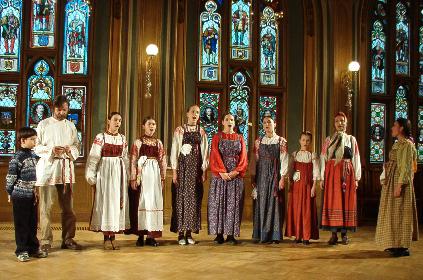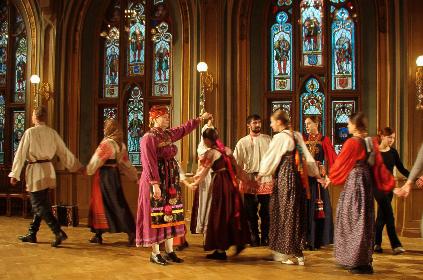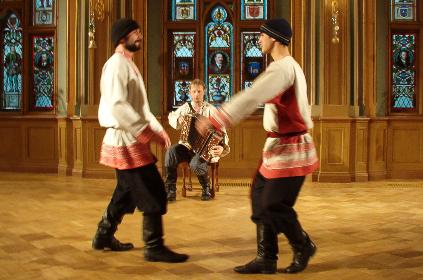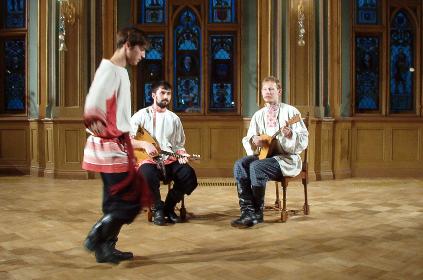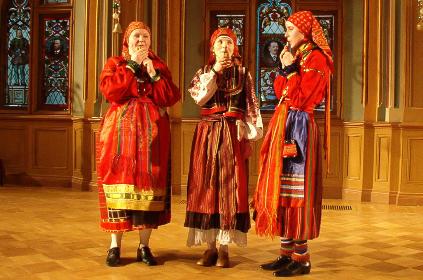|
|
|
|
|
Folklore groups
Instruments Activities About us |
|
|
|
Calendar
Regular Reportings Education |
|
|
|
Support
Fonts Mpeg3 Links Addresses Statistics Guestbook |
|
|
|
You are visitor of folklora.lt and visitor of this page. |
|
Concert of the group "Ramoda", Riga,
In December, after a long break, the concerts of the festival Riga music
have resumed. Already in a second time at this year in the festival participated
a Russian folklore ensemble; this time - Ramoda from Moscow.
From the previous concerts of the Riga music this one differed now by
lay-out of the hall (where was not the habitual stage), now by organizational
concept (at the beginning of the concert has performed a local ensemble
Ilyinskaya pyatnitsa).
Ilyinskaya pyatnitsa has started by two Christmas songs of Latgalian
Byelorussians and has continued by a recruits song of old-believers and a ballad
of Arakchevians (soldiers-peasants, which in caric Russia times have settled in Latgalia
too). Then women and girls has danced a wedding round dance, and one girl has sang
a children's comic song, intended for development of skills of singing of funeral
wailing songs. Then the ensemble has performed a ballad about the Kiev widow and her
nine sons-robbers. The performance has finished by whirlings (action, during which
everyone stand in a semicircle and sing, and one pair in middle whirles). As in
Ilyinskaya pyatnitsa there are only two men - the leader and her small son,
the muscovites have helped to whirle.
Ramoda camed out with a lingering song and a polonaise-like motion.
Then Svetlana Vlasova has told about the work of the ensemble. Ramoda works
with two traditions of the so-called late resettlement: Siberian and
South Russian.
At the first part of the performance the ensemble showed a folklore of
Siberian old-believers. At the beginning they have shown some
roundelays.
An interesting matter was a song "under fight" - fisticuffs in accompaniment
of folk music. As for a true fight a special mental and fleshly preparation
is required, and an achievement of an appropriate condition too,
the ensemble has shown a children's educational version, in which the
purpose of wrestling is to tear off the cap from the head of a contender.
Within the tradition of villages near Ukrainian border, the collective has
shown also some interesting folk music instruments - kolyukas, pipes (played by men)
and koogeeklas (played by women).
On two balalaikas two lads have played a melody, and the third one has danced.
The sound of koogeeklas was very original and interesting.
The ability of the ensemble to give a such long concert, not having lost an
attention of the spectators for the whole time, is worthy of admiration.
It, obviously, was possible due to the large diversity of the repertoir. Songs' recordings from this activity:
Article: Ansis Ataols Bērziņš, 24 December 2003 |
|
Questions, comments and suggestions are welcome to ansis_N@N_folklora.lt This page is created with support of SFL, Latnet and Lanet. |
|
03 September 2018 |
